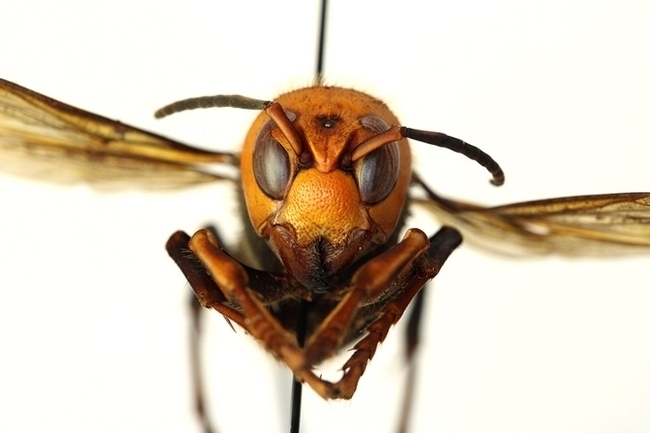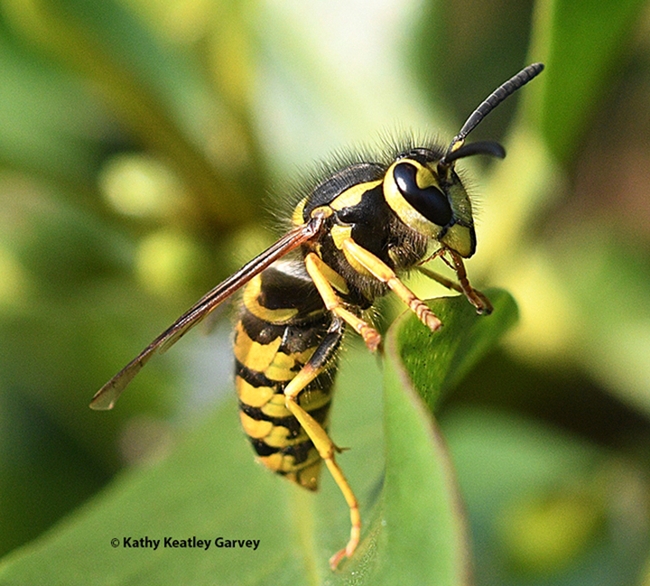- Author: Kathy Keatley Garvey
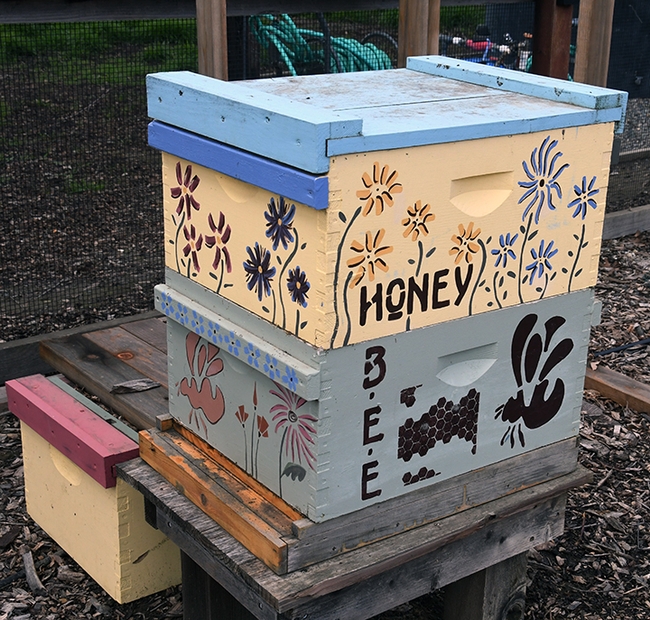
No, wait. Catch...examine...and then release.
That's what attendees will do at the UC Davis Bee Haven's 15th anniversary celebration, set from 10 a.m. to noon on Saturday, April 6 on Bee Biology Road, west of the central campus.
They'll be using a bee vacuum device to scoop up a honey bee, carpenter bee, bumble bee or other pollinator for close observation.
The half-acre garden is located next to the Harry H. Laidlaw Jr. Honey Research Facility. Both are part of the UC Davis Department of Entomology and Nematology.
The open house, free and family friendly, will include a tour of the garden at 11 a.m.; catch-and-release bee activity to observe bees up close; information about low-water plants; and presentations on University of California pollinator research.
The haven is open daily from dawn to dusk (no admission). It is described as "a unique outdoor museum that provides resources for local bee pollinators, inspires and educates visitors to create pollinator habitat gardens, and provides a site for the observation and study of bees and the plants that support them."
Director of the garden is Elina Lastro Niño, associate professor of Cooperative Extension - Apiculture, UC Davis Department of Entomology and Nematology. Christine Casey is the manager, the academic program management officer.
Workers installed the garden in the fall of 2009, under the tenure of interim department chair Lynn Kimsey, now UC Davis distinguished professor emerita, and with primary funds from the Häagen-Dazs ice cream brand. Featuring a series of interconnected gardens with names like “Honeycomb Hideout,” “Nectar Nook” and “Pollinator Patch,” it was designed to provide the Laidlaw honey bees with a year-around food source, raise public awareness about the plight of honey bees, encourage visitors to plant bee-friendly gardens of their own, and serve as a research site.
A six-foot worker bee sculpture of ceramic and mosaic anchors the garden. It's the work of self-described "rock artist" Donna Billick of Davis. UC Davis distinguished professor Diane Ullman and Billick co-founded and directed the UC Davis Art-Science Fusion Program, and their art and that of Ullman's entomology students, as well as members of the community and other volunteers, are showcased throughout the garden.
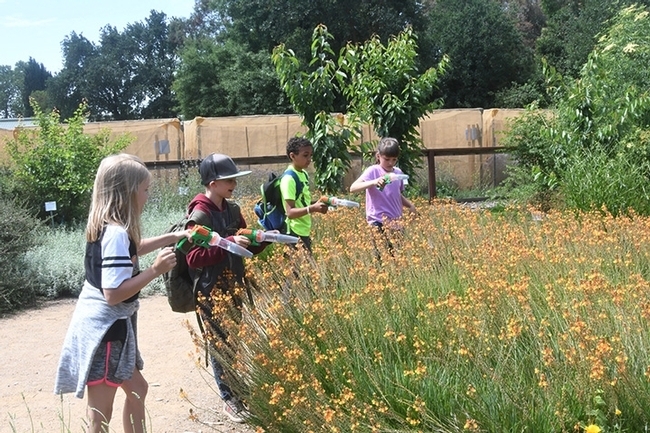
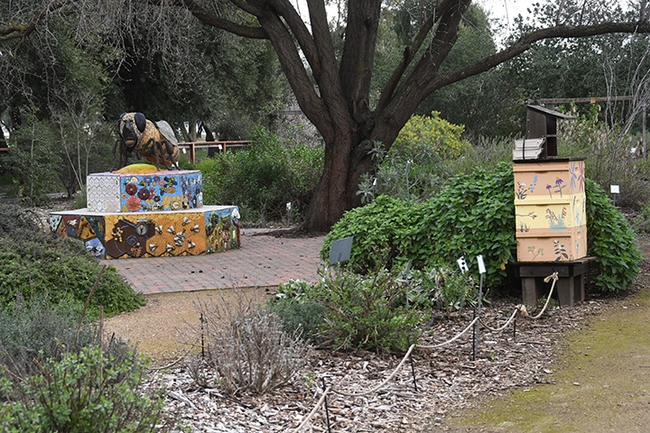
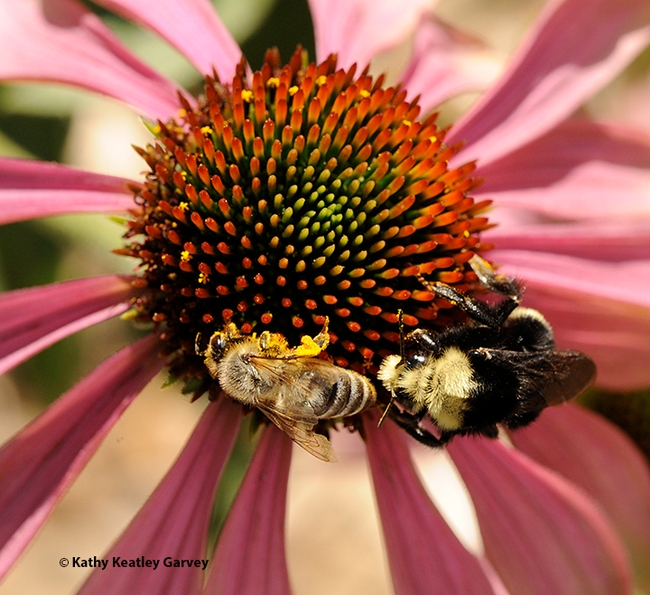
- Author: Kathy Keatley Garvey
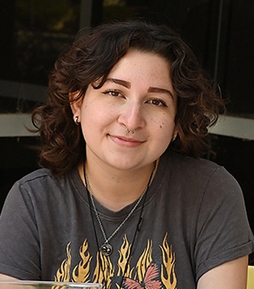
Just ask UC Davis entomology student Sol Wantz, who will present a talk on katydids (her favorite insect), grasshoppers and crickets at the Bohart Museum of Entomology open house, set from 1 to 4 p.m., Sunday, March 3 in Room 1124 of the Academic Surge Building, 455 Crocker Lane, UC Davis campus. It's free and family friendly.
We remember a crab spider that also found a katydid "incredibly fascinating." Umm, make that "nutritious." The spider grabbed the katydid on a Mexican sunflower (Tithonia rotundifola) in our garden, paralyzed it with a venomous bite, and then dragged it beneath the petals to eat it.
It's all about the cycle of life. Everything eats in the garden.
Sol Wantz triples as a curator intern at the Bohart Museum of Entomology, a student researcher in the lab of pollination ecologist and professor Neal Williams, and as president of the UC Davis Entomology Club.
“I'll be giving a overview of all of the major and most interesting--in my opinion--families of Orthoptera," she said. The order includes some 20,000 species worldwide.
Did you know that "the katydid genus Supersonus produces the highest frequency sound of any known animal, up to 150 kHz!" she asks. "For reference, humans can hear only between 0 and 20 kHz."
The Bohart Museum, directed by Professor Jason Bond, is located in Room 1124 of the Academic Surge Building, 455 Crocker Lane. It houses a global collection of eight million insect specimens, plus a live petting zoo (Madagasgar hissing cockroaches, stick insects, tarantulas and more) and an insect-themed gift shop stocked with T-shirts, hooded sweatshirts, books, posters, jewelry and insect-collecting equipment.
For more information, access the Bohart website at https://bohart.ucdavis.edu or contact bmuseum@ucdavis.edu.
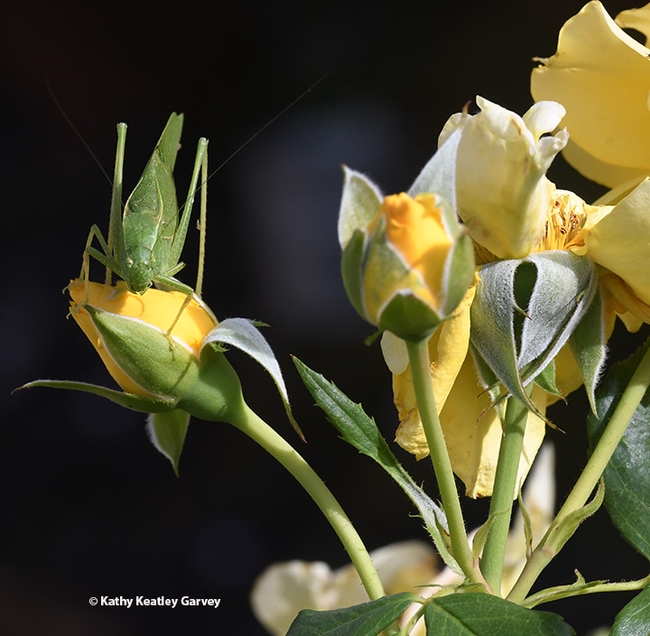
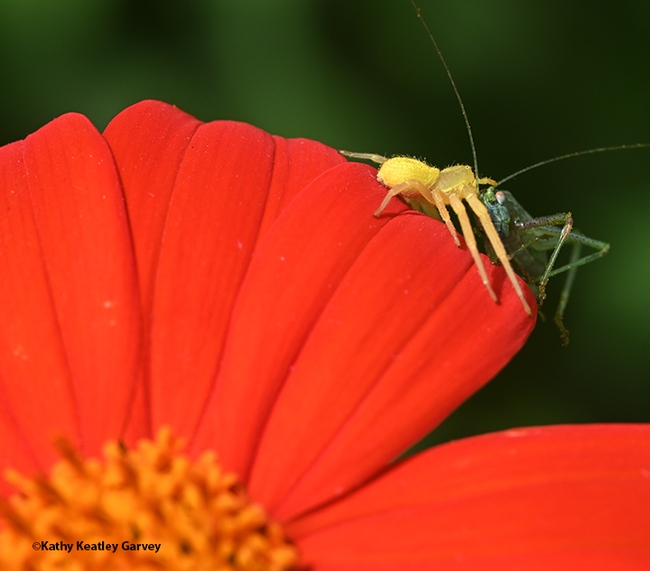
- Author: Kathy Keatley Garvey
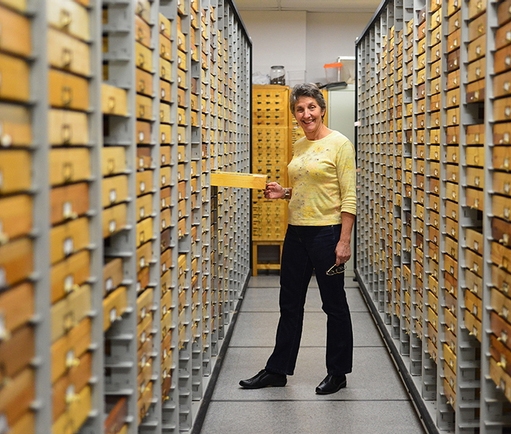
"We will be doing paper mache wasp nests; I'm thinking of starter queen nests, so small little paper wasp nests," said Tabatha Yang, the Bohart Museum's education and outreach coordinator.
The event, free and family friendly, takes place in Room 1124 of the Academic Surge Building, 455 Crocker Lane, UC Davis campus. Parking is also free.
UC Davis distinguished professor Lynn Kimsey, director of the Bohart Museum, will be featured. She will answer questions on social wasps as visitors examine wasp specimens. The Bohart, the home of a worldwide collection of eight million insect specimens,has about 50,000 wasp specimens.
Kimsey defines social wasps as "Wasps that live together and cooperate in a colony, with female workers and a queen; only the queen has babies." To date, scientists have described some 2000 wasp species worldwide, with an estimated 500 yet to be described.
Kimsey says that common myths about wasps include:
- They are often seen as malevolent beings out to get you and will chase you
- That they serve no purpose except to annoy us
- If you're allergic to bee stings you'll be allergic to wasp stings
- A copper penny place on a sting will make it go away
However, "they provide valuable ecosystem services, they do pest control and they assist in nutrient recycling and pollination," she says.
Kimsey, who joined the UC Davis faculty in 1989 and became director of the Bohart Museum in 1990, plans to retire from the university in February 2024. However, she will remain executive director of the Bohart Museum Society. "It just means that I won't be teaching or doing university administrative things any more," she wrote in the current edition of the Bohart Museum Society Newsletter, which she writes and edits.
The Bohart Museum also houses a live petting zoo, including Madagascar hissing cockroaches, walking sticks and tarantulas; and an insect-themed gift shop stocked with T-shirts, hoodies, books, posters, jewelry and more. Further information is available on the Bohart Museum website at https://bohart.ucdavis.edu/ or by emailing bmuseum@ucdavis.edu.

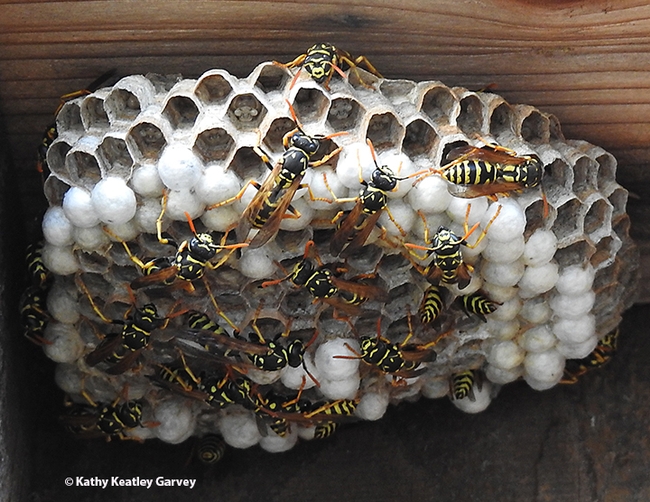
- Author: Kathy Keatley Garvey

For one, they're pollinators. Two, they're great predators, contributing to the biocontrol of such lepidopteran pests as cabbageworms (larva of cabbage white butterflies). Three, they're quite intelligent. Four, they're superb architects.
And they are much more. (Professor Amy Toth of Iowa State University told a UC Davis Entomoloogy and Nematology seminar: "They have been shown to carry yeasts to winemaking grapes that may be important contributors to the fermentation process and wonderful flavors in wine!"
Enter the Bohart Museum of Entomology, which is hosting an open house on "Social Wasps" from 1 to 4 p.m., Saturday, Jan. 20 in Room 1124 of the Academic Surge Building, 455 Crocker Lane, UC Davis campus. Attendees can chat one-on-one with wasp expert UC Davis distinguished professor Lynn Kimsey, director of the Bohart Museum. They can check out the wasp specimens; the Bohart houses some 50,000 vespid specimens in its eight-million insect specimen collection.
The open house is free and family friendly. Parking is also free.
Kimsey estimates that 2000 described species inhabit our world, and about 500 more are undescribed. The most headline-grabbing wasp? That would be the northern giant wasp, Vespa mandarinia, formerly known as the Asian giant wasp. The news media dubbed it "the murder hornet."
Many folks confuse the Western yellowjacket and the European paper wasp. An easy way to identify them is by the color of their antennae. Yellowjacket antennae are black, like the Las Vegas Raiders' logo, and European paper wasp antennae are orange, like the logo of the San Francisco Giants.
Kimsey details information on her fact sheets on yellowjackets and paper wasps. For example:
Yellowjackets. They build large, hidden nests, often in rodent burrows or in cavities of trees, walls or attics. Their nests can be huge with 50,000 to 100,00 workers. They feed on live prey. But the pest species, such as the Western yellowjacket, Vespula pensylvanica, "will scavenge other sources of meat and sugar, including sodas , hamburgers, and road kill." They are often called "meat bees."
Paper Wasps. They build open-faced nests, with the cells exposed. "Nests are built out of fibers the wasps collect from plants and mix with saliva. They are commonly located under eaves an in other protected sites. Even large nests rarely have more than 30 workers and one queen. These are all annual nests. They are founded in the spring and die in the fall. Paper wasps feed only on live insects, such as caterpillars and bugs. They do not scavenge in garbage or at picnics, like some of the yellowjacket species will do." Common in Northern California is the European paper wasp, Polistes dominula.
Kimsey is a recognized authority on insect biodiversity,systematicsandbiogeography of parasitic wasps, urban entomology, civil forensic entomology, and arthropod-related industrial hygiene. Among her many honors: she served as president of the International Society of Hymenopterists from 2002-2004. In 2020 she won the C. W. Woodworth Award, the highest honor bestowed by the the Pacific Branch, Entomological Society of America (PBESA).
Kimsey plans to retire in 2024 but will continue her research and public service at the Bohart Museum.
The Bohart Museum not only houses a global collection of insect speciments, but a live "petting zoo" (Madagascar hissing cockroaches, stick insects, tarantulas and more), and an insect-themed gift shop. For more information, contact the Bohart Museum at bmuseum@ucdavis.edu or access the website at https://bohart.ucdavis.edu
Further Reading:
Wasps, The Astronishing Diversity of a Misunderstood Insect, a 256-book by Eric Eaton, published in 2021 by Princeton University. The pub;isher reports: "Wasps are far more diverse than the familiar yellowjackets and hornets that harass picnickers and build nests under the eaves of our homes. These amazing, mostly solitary creatures thrive in nearly every habitat on Earth, and their influence on our lives is overwhelmingly beneficial. Wasps are agents of pest control in agriculture and gardens. They are subjects of study in medicine, engineering, and other important fields. Wasps pollinate flowers, engage in symbiotic relationships with other organisms, and create architectural masterpieces in the form of their nests. This richly illustrated book introduces you to some of the most spectacular members of the wasp realm, colorful in both appearance and lifestyle. From minute fairyflies to gargantuan tarantula hawks, wasps exploit almost every niche on the planet. So successful are they at survival that other organisms emulate their appearance and behavior. The sting is the least reason to respect wasps and, as you will see, no reason to loathe them, either. Written by a leading authority on these remarkable insects, Wasps reveals a world of staggering variety and endless fascination."
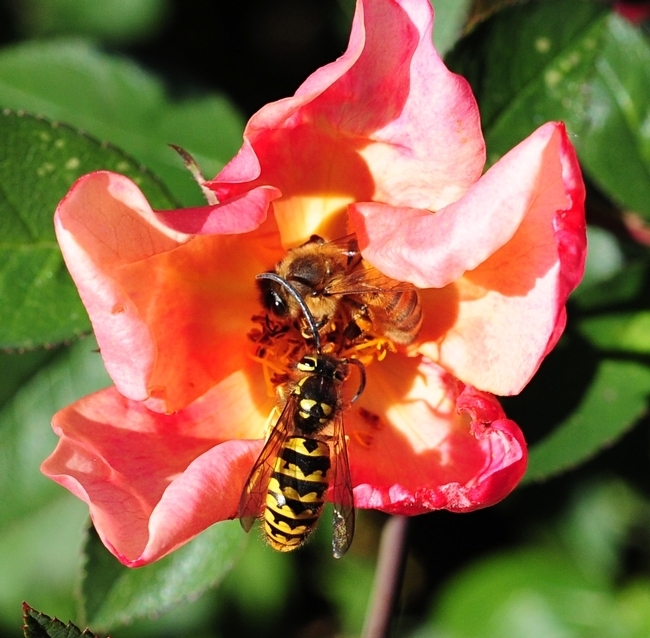
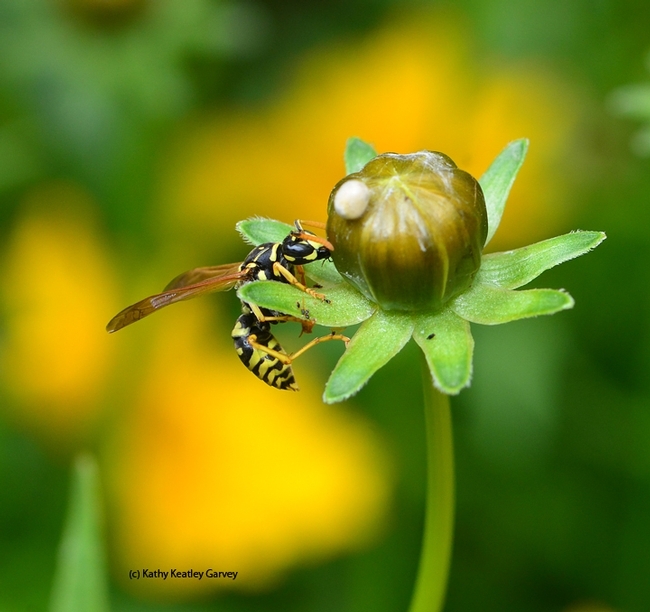
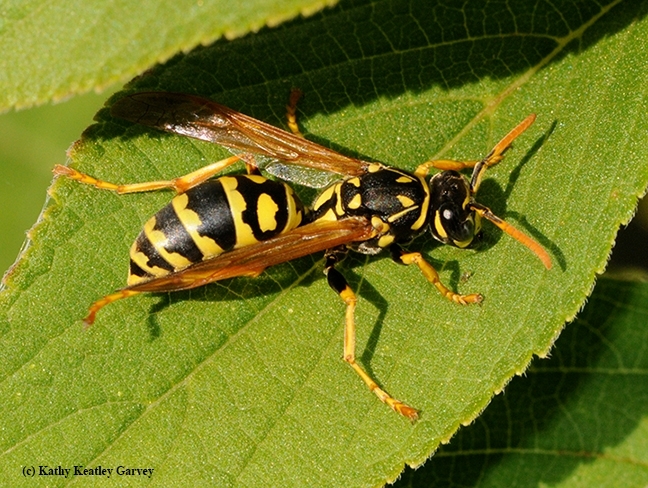
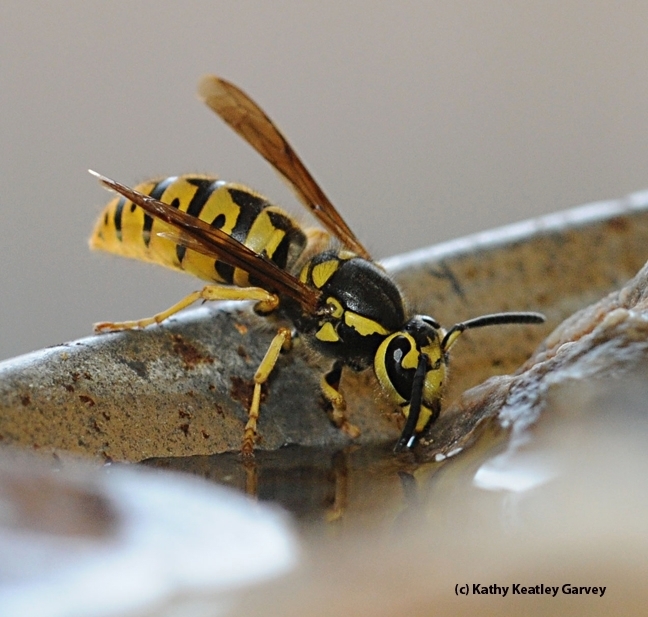
- Author: Kathy Keatley Garvey
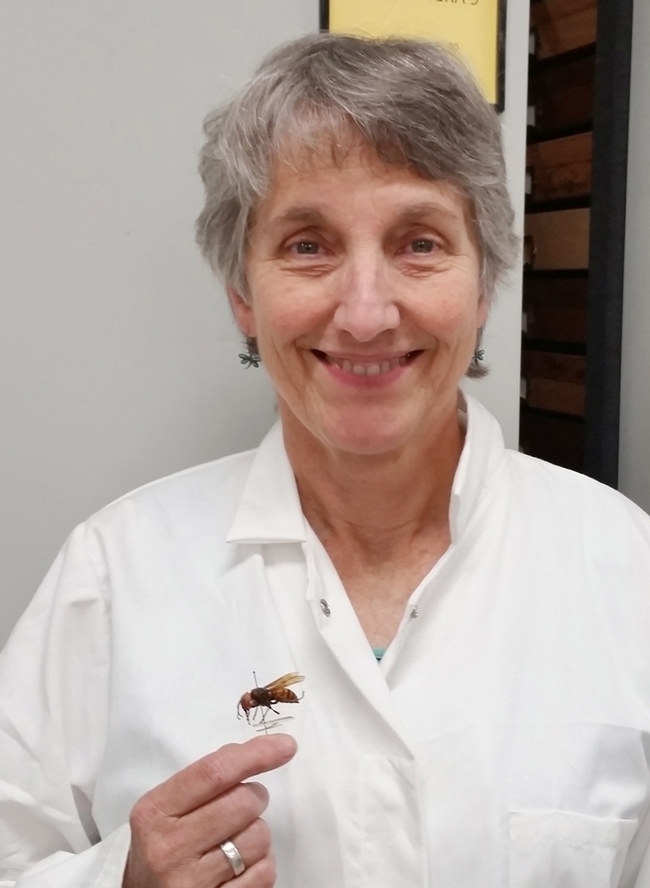
How much do you know about social wasps? Would you like to engage in a "meet-and-greet" with them and talk to a wasp expert?
UC Davis distinguished professor Lynn Kimsey, director of the Bohart Museum of Entomology, will be featured at the next Bohart open house, themed "Social Wasps," from 1 to 4 p.m., Saturday, Jan. 20, in Room 1124 of the Academic Surge Building, 455 Crocker Lane, UC Davis campus.
Kimsey will answer questions and show specimens.
The event is free, family friendly, and open to the public. Parking is also free.
Meanwhile, we asked Professor Kimsey some questions about her favorite research subject:
1. Define social wasps.
"Wasps that live together and cooperate in a colony, with female workers and a queen; only the queen has babies."
2. What drew you to study social wasps?
"I just like stinging things in general and their anatomy and social behavior are really interesting."
3. What are some of the common myths about social wasps?
- They are often seen as malevolent beings out to get you and will chase you
- That they serve no purpose except to annoy us
- If you're allergic to bee stings you'll be allergic to wasp stings
- A copper penny place on a sting will make it go away
4. What are 3 main things the public should know about social wasps?
- They provide valuable ecosystem services
- They do pest control
- They assist in nutrient recycling and pollination
5. How many described species of social wasps are there in the world? Undescribed? Estimate?
"There are about 2,000 described species of social wasps worldwide. Undescribed, maybe another 500."
6. What are some of the most-awed social wasps in the Bohart collection?
"Clearly the murder hornet, Vespa mandarinia." Formerly known by its common name, Asian giant hornet, it is now known as "northern giant hornet," per the Entomological Society of America. The hornet, considered the world's largest hornet, is native to Asia. It was first detected in the Pacific Northwest in 2019, and with nests found in 2021.
7. How many vespids in the collection?
"We have roughly 50,000 vespids in the collection; not sure how many species."
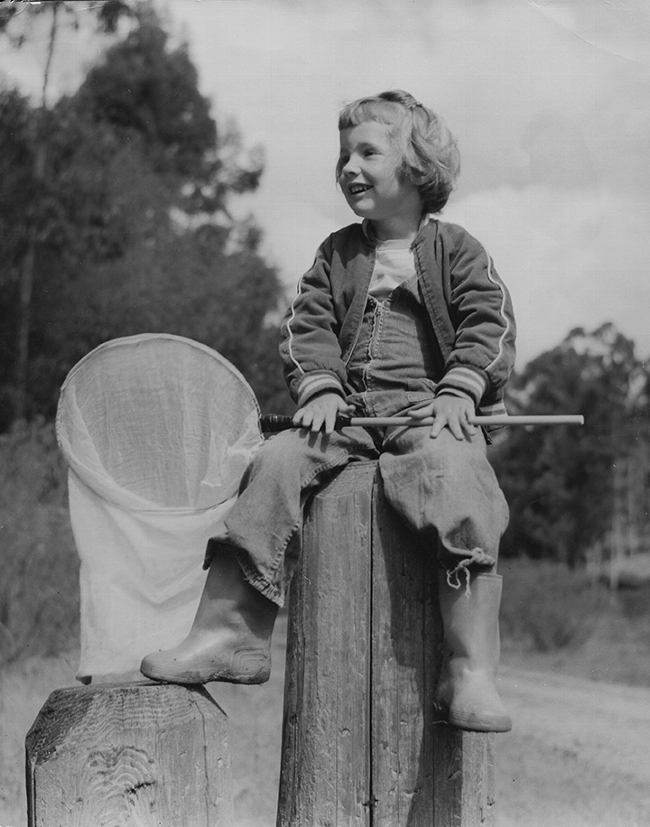
Kimsey, who grew up in El Cerrito as Lynn Siri, the daughter of a biologist and a biophysicist, received her first insect net at age 5. She holds two entomology degrees from UC Davis: a bachelor's degree (1976) and a doctorate (1979). After serving as a visiting professor/lecturer at the Museum of Comparative Zoology, Harvard University, and then a research associate at Harvard, she joined the UC Davis faculty as an associate professor in 1989.
Bohart Beginnings. When UC Davis entomologist Richard "Doc" Bohart (1913-2007) founded the museum in 1946, it included only 400 insect specimens at its Briggs Hall location. Under Kimsey's tenure, it has grown to a global collection of eight million insect specimens in Room 1124 of the Academic Surge Building, 455 Crocker Lane, and is the seventh largest insect collection in North America.
Today the Bohart draws an average of 15,000 visitors a year, adds an average of 30,000 new specimens annually, and loans an average 7000 specimens yearly to scientists worldwide. It supports campus classes with specimens, live insects and exhibits in keeping with its mission: “Understanding, documenting and communicating terrestrial arthropod diversity.”
Kimsey served as president of the International Society of Hymenopterists from 2002-2004, and as a member of the board of directors of the Natural Science Collections Alliance in 2000 and 2001. The Pacific Branch, Entomological Society of Ameica (PBESA) singled her out for its highest honor, the C. W. Woodworth Award, in 2020. She received the PBESA Systematics, Evolution, and Biodiversity Award in 2014 and was a member of 'The Bee Team' that won the PBESA Outstanding Team Award in 2013. The UC Davis Academic Senate honored her with its Distinguished Scholarly Public Service Award in 2016 in recognition of her outstanding work. She received the UC Davis College of Agricultural and Environmental Sciences (CA&ES) Exceptional Faculty Award in 2023.
Kimsey served as the vice chair of the UC Davis Department of Entomology in 2005-2006 and again in 2009-2010 and chaired the department in 2008-2009. She plans to retire in 2024 but will continue her research and public service at the Bohart Museum.
The Bohart Museum also houses a live "petting zoo" (Madagascar hissing cockroaches, stick insects, tarantulas and more), and an insect-themed gift shop. For more information, contact the Bohart Museum at bmuseum@ucdavis.edu or access the website at https://bohart.ucdavis.edu
Resource:
Amazing Story About What Entomologist Lynn Kimsey Recorded in San Francisco Bay 50 Years Ago (Aug. 23, 2021, Bug Squad)
